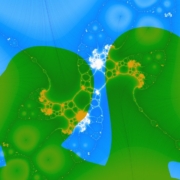6 Principles of Neuroplasticity: Harness The Brain’s Ability to Unlearn Pain in The Body
Do you know that the human brain has the ability to unlearn pain in the body?
We often reach for ‘temporary pain relief’ from external sources like pills, shots or even surgery. But for a permanent solution to chronic pain, the brain needs to unlearn patterns that keep recreating pain.

Neuroplasticity, or the innate capacity to learn and unlearn, allows individuals to overcome the unconscious, habitual patterns of thinking, moving, feeling and acting. In other words, it’s possible to learn to utilize self-healing for pain.
Unlock Pain Free Living Today
Our experiences in life are restricted by what is or is not permitted to move in our bodies.
These limitations result not only from physical injury, but are a direct reflection of our rules, strategies and beliefs. As children, we learn what not to move in order to be loved or at least survive. Our adaptation to life on Earth, and our caregivers, expose us to experiences of rejection, fear, permission and encouragement. All these and more become wired into our personal pathways of movement.
Permanent pain relief and the potential for true healing incorporates the following principles:
- Healing goes beyond curing.Healing does not start or stop with the current medical model of fixing or curing. It may include it if we have a spurting artery, a broken bone or a virus or some other medical problem. If you’re feeling unaware, stressors are high, and you’re out of alignment, damaging joints or negatively affecting the body, then you may benefit from a somatic approach
- Healing is a way of learning.The brain learns through rediscovery of functional movement and the bringing back of awareness to any aspect of self. These are always two crucial elements of healing. Somatic re-education is the pathway to rediscovering new ways of moving more efficiently, comfortably and safely.
- Personal history determines the way we move.The reason movement counts is that our personal histories are our movement. Our limitations result not only from physical injury but are also a manifestation of our fears, permissions, encouragements and all the beliefs we formed since we were a baby. What is or is not permitted to move in our bodies is a direct reflection of how we organized our self to seek love, approval or survival…depending on what environment we lived in as a child. So when we free up movement, we typically free up a lot of unconscious ways our body is holding pain.
- Our minds, emotions and body are interconnected.Healing needs to honor the interconnectivity of our mental thoughts, emotional state, habitual behavior and movement. For example, physical injury may reopen past emotional wounds and create anxious thoughts about the future. Emotional trauma is lodged in the body’s posture, movement, and energetics. Such patterns may lead to dysfunction such as back pain, headaches, sleeplessness and so on. Interconnectivity of our approach allows us to understand the coded messages from the body signaling a need to heal.
- Physical conditions can be improved with movement.Even structural issues like bulging or herniated discs, scoliosis or arthritis requires learning a better way to move, to increase comfort and avoid or minimize future or further damage.
- The body is a system, not a symptom.Bodily symptoms are a sign of a faulty system. The body functions as a whole integrated system which is organized by the brain at command central. Illness isn’t a myriad of isolated symptoms.
Unlock Pain Free Living Today

Let’s put these 6 principles of neuroplasticity into context.
As a child, our clever brain and nervous system learns to crawl, walk and run. We grow into adults, these movement patterns become less efficient as they are influenced by injuries, repetitive stress and emotional/physical traumas.
Our brain figures out alternative neuropathways intended to avoid pain or further injury. These compensations are less efficient, and always more injurious as they become unconscious habits that still fire long after the stress or original injury is eliminated.
All these unconscious habits and harmful compensations are running in the background of our daily physical activities. Often, over time, we reach a tipping point where we have used up our body’s margin of error. Our brain attempts to warn us via pain and symptoms that we are in danger.
When we ignore the pain or muscle through it, the brain gets stuck firing the now involuntary, habitual pain pattern. According to Hebb’s Law: What fires together, wires together.
We often mistake this stage as an “All of a Sudden Injury”, “Chronic Pain” or “Premature Aging.” But the truth is that the dramatic breakdown — a herniated disc, a torn labrum, a blown out knee, TMJ, arthritis, fibromyalgia, etc. was initiated by how the brain commanded the muscles to fire.
Damaged neurons fire incessant false alarms, making us believe the problem is in our body when it is mostly in our brain. Long after the body has healed, the pain system is still firing in our brain.
Unlock Pain Free Living Today
If you address pain relief with methods to rewire the brain instead of simply treating the local symptom, you actually ‘unlearn’ pain and upgrade the brain’s entire operating system. In this way, neuroplasticity supports each person’s ability to truly heal from inside out. It’s possible to re-discover and re-learn the ease, fluidity, and freedom the brain created innately.
 Judy Ban Greenman
Judy Ban Greenman
Judy Ban Greenman is a Natural Pain Relief and Empowerment Coach. She helps people access physical and emotional freedom, so they can transform struggle, reduce symptoms, move freely, and live fully with ease, choice and connection. Learn more about her work at Body Brain Freedom, https://bbfree.co/.

